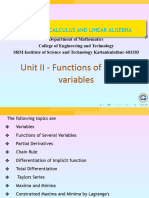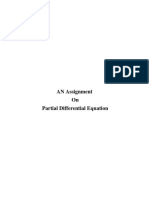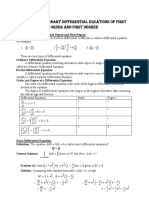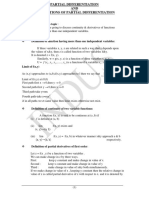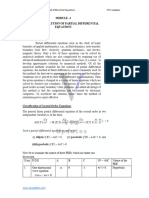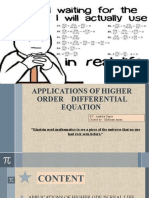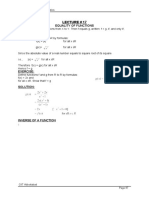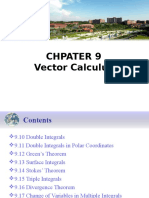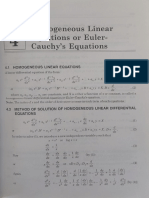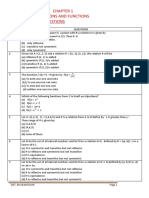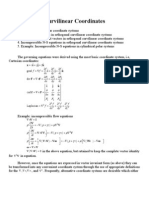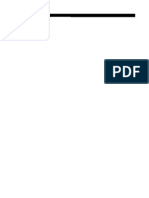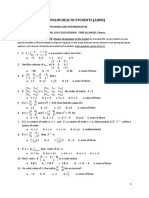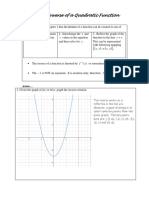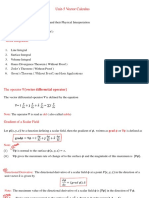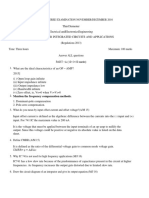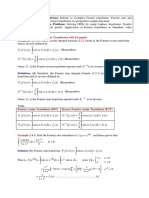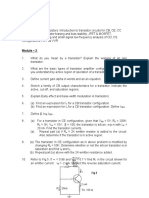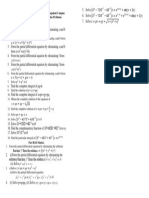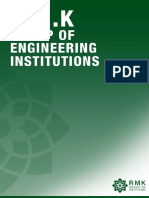0% found this document useful (0 votes)
138 views107 pagesModule - 1 Partial Differential
This document provides an overview of the key topics covered in Module 1 of a Calculus and Laplace Transform course, including:
- Functions of two variables, limits and continuity, and partial derivatives
- Chain rule, extreme values, saddle points, and Lagrange multipliers with one constraint
- Exercises on limits of two variables, continuity, partial derivatives, Euler's theorem, total differential, implicit functions, directional derivatives, Taylor's series, and Lagrange's method
The document lists the chapter contents and provides brief explanations of topics like total differential, directional derivatives, Taylor's series, and using Lagrange's method with multipliers to find extreme values subject to a constraint. It directs students to related exercises at
Uploaded by
B SaraswathiCopyright
© © All Rights Reserved
We take content rights seriously. If you suspect this is your content, claim it here.
Available Formats
Download as PDF, TXT or read online on Scribd
0% found this document useful (0 votes)
138 views107 pagesModule - 1 Partial Differential
This document provides an overview of the key topics covered in Module 1 of a Calculus and Laplace Transform course, including:
- Functions of two variables, limits and continuity, and partial derivatives
- Chain rule, extreme values, saddle points, and Lagrange multipliers with one constraint
- Exercises on limits of two variables, continuity, partial derivatives, Euler's theorem, total differential, implicit functions, directional derivatives, Taylor's series, and Lagrange's method
The document lists the chapter contents and provides brief explanations of topics like total differential, directional derivatives, Taylor's series, and using Lagrange's method with multipliers to find extreme values subject to a constraint. It directs students to related exercises at
Uploaded by
B SaraswathiCopyright
© © All Rights Reserved
We take content rights seriously. If you suspect this is your content, claim it here.
Available Formats
Download as PDF, TXT or read online on Scribd
/ 107
